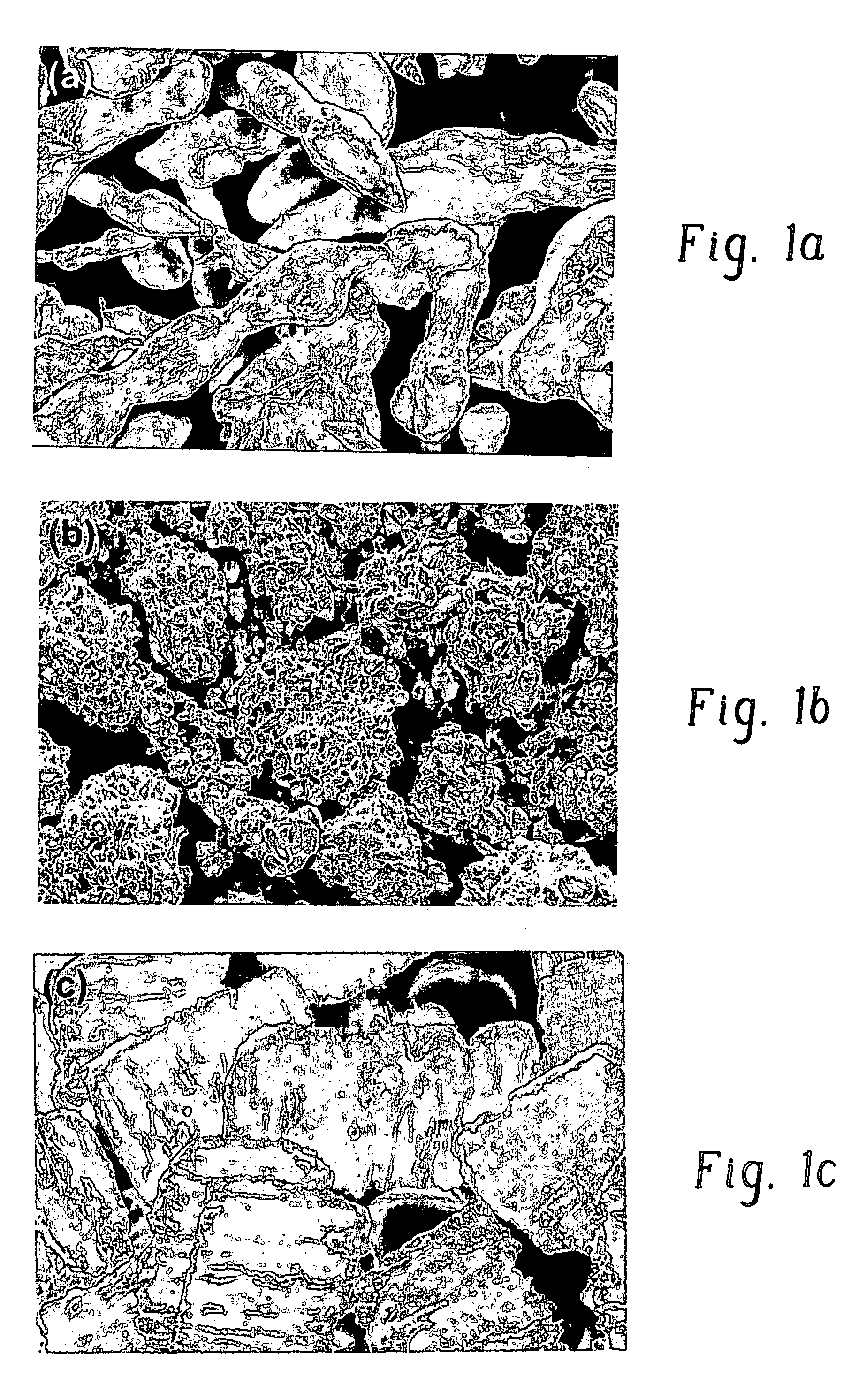Electrochemical cell
a technology of electrochemical cells and cells, applied in the field of electrochemical cells, can solve the problems of increasing the electrochemical capacity, affecting the cost and service performance of the cell in at least four ways, and causing the difficulty of anode processing in high-speed assembly machines
- Summary
- Abstract
- Description
- Claims
- Application Information
AI Technical Summary
Benefits of technology
Problems solved by technology
Method used
Image
Examples
Embodiment Construction
[0018] The following terms are defined for use herein.
[0019] The phrase “particulate zinc” means a collection of zinc particles that represent a wide array of irregular shapes and sizes. Almost every particle appears to have a unique shape and / or size. Shown in FIG. 1a is an SEM micrograph of particulate zinc.
[0020] The term “agglomerate”, when used as a noun, means an assemblage of particles which are either loosely or rigidly joined together. Particles may be joined together via the presence of an agglomerant or, if an agglomerant is not present, each particle is physically secured to at least one other particle in the agglomerate. Agglomerates may be manually crushed thereby disassociating the particles from one another. Particles that are in close proximity to one another but are not associated via an agglomerant or physical connection are not considered to form an agglomerate. Shown in FIG. 1b is a SEM micrograph of zinc agglomerates.
[0021] The phrase “agglomerated particles...
PUM
| Property | Measurement | Unit |
|---|---|---|
| tap density | aaaaa | aaaaa |
| tap density | aaaaa | aaaaa |
| tap density | aaaaa | aaaaa |
Abstract
Description
Claims
Application Information
 Login to View More
Login to View More - R&D
- Intellectual Property
- Life Sciences
- Materials
- Tech Scout
- Unparalleled Data Quality
- Higher Quality Content
- 60% Fewer Hallucinations
Browse by: Latest US Patents, China's latest patents, Technical Efficacy Thesaurus, Application Domain, Technology Topic, Popular Technical Reports.
© 2025 PatSnap. All rights reserved.Legal|Privacy policy|Modern Slavery Act Transparency Statement|Sitemap|About US| Contact US: help@patsnap.com



